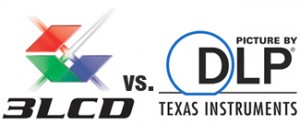|
|
1-347-227-2077
1-800-575-3309
Projector Lamps World Blog
Epson EX7210 Projector Review
Posted by admin on November 29, 2012
The Epson EX7210 is a portable business projector that focuses on a good set of features and excellent image quality to deliver easy usability when giving business presentations to small groups.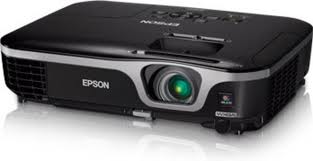
The EX7210 offers 1280 by 800 WXGA native resolution (with support for 720p high-definition image) and has an aspect ratio of 16:10, providing a good-sized image for short-throw distances. The projector uses 3LCD technology for superior color quality. Even with considerable ambient light, the EX7210 offers ample brightness thanks to its lamp, rated at 2,800 lumens for color light and white light output.
Ports on Epson’s EX7210 include HDMI, VGA, S-Video, and 3 RCA plugs for composite audio and video as well as type A and type B USB ports for connecting to a thumb drive or PC, respectively. The projector also features vertical image correction and a slider that allows you to manually control horizontal keystone correction, so you can project a rectangular image from nearly any angle.
Epson’s EX7210 measures 3.1 by 11.6 by 9 inches and weighs only 5.1 pounds, making it one of the smaller, lighter multimedia projectors on the market. The fact that you don’t need to connect the projector to a computer means this projector was built to give presentations on the go.
Epson has gone that extra mile to create eco-friendly, energy-efficient products, and the EX7210 is no exception. The projector delivers more lumens per watt and is rated to last up to 5,000 hours under normal settings. The lamp is also designed to minimize light diffraction and leakage to ensure all of the light ends up on the screen.
The Epson EX7210 presents superb image quality in a lightweight, portable body. A built-in speaker delivers surprisingly good audio, giving you everything you need to for a great professional presentation.
Epson EX3210 Projector Review
Posted by admin on November 5, 2012
The Epson EX3210 is a business projector that delivers great performance and versatility in a robust, compact body for easy mobility.
Using and setting up the Epson EX3210 is a breeze thanks to intuitive controls and 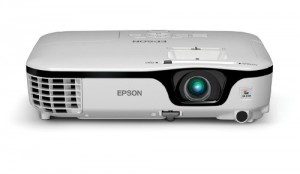 features like USB Plug ‘n Play. The projector features automatic vertical keystone correction, while the easy-slide control bar allows you to adjust horizontal keystone correction manually.
features like USB Plug ‘n Play. The projector features automatic vertical keystone correction, while the easy-slide control bar allows you to adjust horizontal keystone correction manually.
The EX3210 runs on 3LCD chip technology in which three separate LCD panels are responsible for processing each of the three primary colors. This results in more vivid, true-to-life colors and 25 percent less electricity use. Epson’s EX3210 projector has native SVGA resolution (800 by 600) with a contrast ratio of up to 3000:1 to enhance the sharpness and clarity of your picture. The projector delivers 2,800 lumens of white light and color light output for super bright, colorful images.
Epson’s EX3210 has dimensions measuring 11.6 by 9 by 3.1 inches and weighs 5.1 pounds. All of that power and excellent performance in a simple, compact body makes this projector perfect for travel. The projector comes with a carrying case to prevent any damage when you’re giving presentations on the road.
A variety of ports, including S-video, VGA, component, and USB types A and B gives you a great deal of flexibility with your input methods. USB type A allows you to run your presentation from a thumb drive.
Epson’s EX3210 expands the company’s stance on eco-friendly design. The projector uses an energy-efficient lamp that minimizes light diffraction and light leakage, while 3LCD technology uses less electricity than 1-chip DLP projectors to deliver the same crisp image.
At such a low price point, the Epson EX3210 makes an excellent business projector so your presentations are sure to have crisp, clear images. Easy usability and portability make this the perfect projector for the businessperson on the go.
Epson EX7200 Projector Review
Posted by admin on October 16, 2012
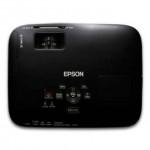
The Epson EX7200 offers a whole host of features along with outstanding image quality to deliver a powerful projector with five-star performance.
The EX7200 runs on Epson’s 3LCD technology, which uses three separate LCD panels, each processing light of a different primary color to create vibrant, realistic colors. With WXGA native resolution (1280 by 800), the EX7200 is compatible with all widescreen laptops with a 16:10 aspect ratio. Automatic keystone correction and 1.2x eye zoom help you adjust and place your image properly on the screen.
Connections for the projector include VGA, component video, S-video, composite, and HDMI as well as USB type B and type A. Type B USB allows you to hook up to a computer, while type A connects to a thumb drive.
The EX7200 has a brightness rating of 2,600 ANSI lumens, which is bright enough to throw an image onto a relatively large screen even with some ambient lighting. The lamp lasts about 5,000 hours on normal settings.
Epson’s EX7200 measures 3 by 11.6 by 9 inches and weighs only 5.1 pounds, making it one of the lightest projectors on the market. In conjunction with the type B USB, you don’t need to worry about lugging your computer around. You can run your entire presentation from a thumb drive. The projector also comes with a soft carrying case for even easier mobility.
In terms of picture quality, the Epson EX7200 displays a dynamic range of vivid images, producing an excellent picture regardless of ambient light in your room. Solid lens performance and consistent focus add depth and clarity to improve your viewing experience.
The Epson EX7200 is an excellent projector with great image quality for both video and data display. The easy usability and portability makes it a versatile machine for any viewing setting, whether you’re setting up your home theater or giving a presentation in the boardroom.
Projector Guide: Which is Right for You?
Posted by admin on October 9, 2012
A projector is used to enlarge small visual media formats such as video, film, and slides for a whole group or audience to see. A projector reads the original image and uses a series of mirrors or prisms and a lamp to duplicate and enlarge it. It’s then projected onto a screen or blank white wall.
Nearly any image can be enlarged and projected with the right type of projector. Common uses of projectors include:
- Film and video viewing
- Slide shows
- Teaching in classrooms and other educational forums
- Presentations, including power point formats
- Any image on a personal computer that the user wishes to show the audience
Different types of projectors are made for different purposes. A projector purchased for watching movies at home is different from a commercial film projector or an overhead projector like the ones teachers use in a classroom. Deciding which projector is right for you largely depend on your needs. Some projectors serve a wide variety of needs, while some are intended for a specific use.
This guide is intended to help you narrow your projector choices down to the type of projector that fits your needs best. There are two types of modern projectors that are attractive to many groups because both serve multiple needs: LCD and DLP.
An LCD projector is commonly used for displaying video and computer images. LCD stands for “liquid crystal display.” The projector lamp sends light through a series of prisms that separate the light into the red, blue, and green spectrum's that comprise the video signal. The image is recreated as the prisms polarize the light and isolate individual pixels, which are opened or closed to varying degrees to allow the proper amount of light to pass through and mix together to create a variety of colors.
DLP projectors are used for digital cinema projection, in addition to front projection use in classrooms and other presentation venues, and rear projection use in televisions and signs such as digital billboards. DLP stands for “digital light processing” and uses a series of small mirrors on a matrix, with each mirror representing one or more pixels in the projected image. Projectors with more mirrors project a higher-resolution and higher-quality image. DLP projectors that have one mirror per pixel create the highest resolution images.
DLP versus traditional film projection: While many commercial cinemas are now using DLP projectors for convenience, some cinemas still use 35mm and 70mm film projectors to display images from moving pictures in theaters. Although the quality of traditional film is unmatched in theory, in practice it’s a format that is easily damaged, which can create poor image quality. Film reels may also break mid-screening and require the projectionist to patch the film back together before the show can continue. The technology of DLP projection offers cinemas the following benefits over traditional film projectors.
- A single projector can display movies in multiple formats.
- Projectionists don’t need to be specially trained in film reel splicing and taping.
- It’s the highest quality available after a film projector.
- Film reels are more expensive to purchase and take up significantly more room in storage than modern formats. They can also be damaged in storage by heat, and lose quality over time the more they are used for projection.
- Replacing dated or broken film projection equipment with DLP is a cost-effective way to transition from one format to the other, and it can be done per theater over time.
Pick a Projector Based on Your Viewing and Format Needs
Many people, businesses, and organizations interested in media projection need it for multiple uses.
- At home, families use projectors for movie watching from both DVDs and direct streaming from a computer. They can also be hooked up to televisions to project a direct TV signal.
- Classrooms use projectors for everything from showing movies to overhead projection and displaying computer screens directly for full class viewing of websites, word processing, and a long list of other programs.
- Businesses may use projection for training, continuing education, and presentations.
- Commercial uses include everything from digital billboards to cinematic and theatrical viewing.
Both LCD and DLP projectors work well for a variety of commercial, home, business, and educational uses. Both types of projectors offer a wide range of image quality and prices. Generally speaking, lower resolution LCD projectors and single chip DLP projectors are more affordable because the image quality is lower, so these formats are found more often in homes, schools, small businesses, and nonprofit theaters. Three-chip DLP projectors and high-resolution projectors have better image quality, but can be significantly more expensive, so they are more often found in cinemas and other commercial applications.
Panasonic PT-AE7000U Projector Review
Posted by admin on September 29, 2012
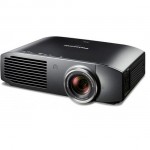
The Panasonic PT-AE7000U is the company’s first 3D projector for home theaters. Using the 3LCD projection system, the PT-AE7000U projects at native 1080p to support both 2D and 3D performance.
Brighter than Most
Rated at about 2,000 lumens, Panasonic’s PT-AE7000U is 25 percent brighter than most 1080p 3D projectors of the same price. Brightness is a big deal when it comes to 3D considering 3D glasses significantly diminish the light you see. The added brightness also makes the projector suitable for placement in essentially any room in the house.
Superb Image Quality
Panasonic has always been committed to providing superior picture quality and the AE-7000U is no exception. Crisp quality, smooth colors, and sharp images contribute to superb picture quality meant to mirror the director’s initial intent and vision.
Great 2D and 3D
While the 2D features on the PT-AE7000U are exceptional, the stand-out is the 3D functionality. A dual core video processor and a refresh rate of 480 Hz allow the PT-AE7000U to bolster 3D performance. An on-board calibration system helps you fine tune the slightest colors and details to bring out the best picture. The PT-AE7000U even allows you to convert 2D to 3D in real time.
Eco Mode: 5,000 Hours!
Panasonic rates the PT-AE7000U lamps for 4,000 hours at full power. In Eco mode, the lamps can last as long as 5,000 hours. This means a low cost of overall operation compared to projectors in the same price range.
If you’re looking for a projector that has 3D capability, great image quality, brightness, and eco mode, the Panasonic PT-AE7000U is a top contender to consider. Measuring 18.5 x 14.34 x 5.94 inches and weighing 19.2 pounds, the projector isn’t the most compact or portable, but it works great as a stationary home projector mounted on the ceiling or set on a table.

